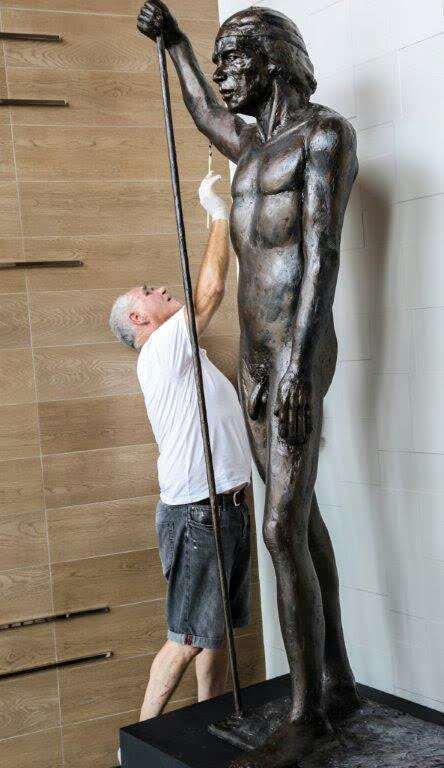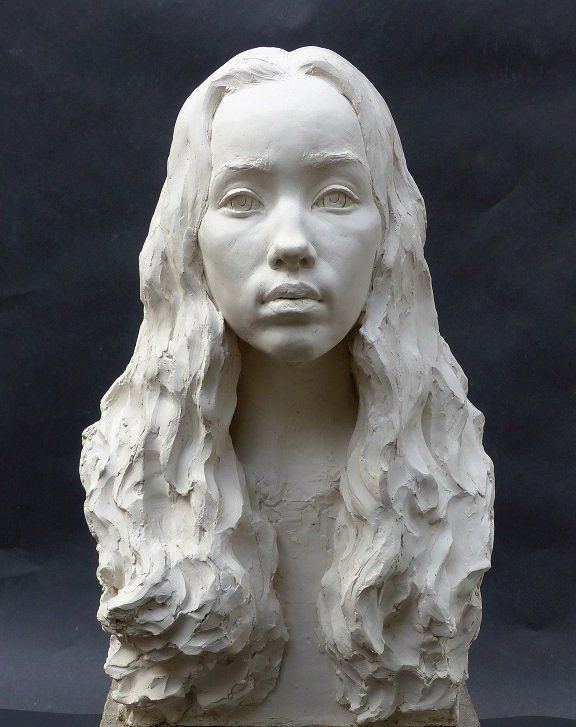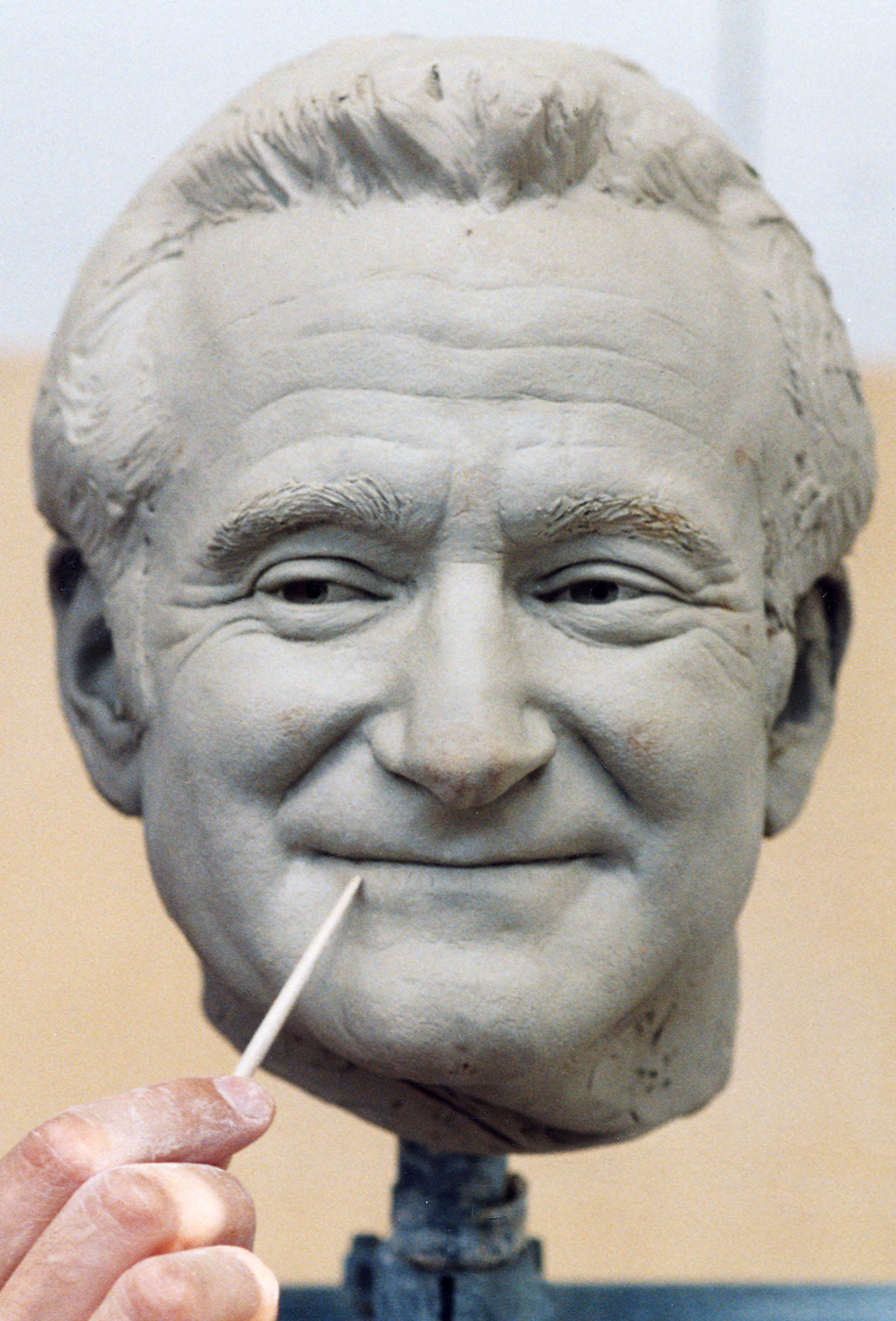The Development of Sculptures: From Ancient to Modern
The Evolution of Sculptures: From Old to Modern.
Sculpture, one of the earliest types of art, has actually been an essential component of human people for centuries (Robert C Hitchcock Sculptor). From the old people of Egypt and Greece to the modern-day era, sculptures have actually advanced, reflecting changes in creative techniques, materials, and cultural impacts. This journey with time traces the advancement of sculptures, checking out the changes in design, topic, and imaginative expression
Beginning with the ancient world, sculptures crafted from stone and later bronze recorded the essence of deities, leaders, and day-to-day life. The Renaissance duration observed a rebirth of classic sculpting strategies, as musicians looked for to mimic the elegant types of old Greek and Roman sculptures. In the modern-day period, artists challenged standard limits, welcoming abstraction and testing with brand-new materials.

This exploration will look into the diverse evolution of sculptures, revealing the abundant tapestry of creative expression across various durations and societies.
Old Sculptures: From Rock to Bronze
Ancient sculptures transitioned from being sculpted out of stone to being cast in bronze. Rock sculptures, while remarkable in their own right, were limited by the nature of the product.
The introduction of bronze as a tool for sculptures brought around a transformation in creative expression. Bronze used sculptors the chance to create elaborate and realistic forms that were not feasible with stone. The process of casting bronze permitted the production of several copies of a sculpture, allowing broader distribution and conservation of these creative masterpieces.
The transition from rock to bronze additionally saw a shift in the subject matter of sculptures. While rock sculptures primarily depicted gods, sirens, and mythical figures, bronze sculptures began to show a wider variety of subjects, including daily people and pets. This growth of subject matter showcased the adaptability and versatility of the bronze medium.
Renaissance Resurgence: Shaping in the Classic Style
The Renaissance rebirth of sculpture experienced a revival in the timeless design, structure upon the advancements made throughout the transition from rock to bronze in ancient sculptures. Throughout this period, musicians looked for to recreate the classic aesthetic and ideals of charm that were common in old Greek and Roman sculptures.
Among the vital features of the Renaissance rebirth was the focus on naturalism and the human kind. Carvers like Donatello and Michelangelo strove to record the physiological details and expressions of their topics with unmatched precision. They examined the human body and integrated their observations into their sculptures, leading to realistic and realistic representations.
Another vital aspect of the Renaissance revival was the exploration of viewpoint and depth. Musicians utilized strategies such as contrapposto, where the weight of the body is shifted away, producing a sense of motion and dynamism. They also trying out various products, including marble and bronze, to achieve a degree of class and ins and out in their sculptures.
The classic design of the Renaissance rebirth had a profound impact on later durations of art, working as a foundation for the development of Western sculpture. It brought a renewed admiration for the charm and magnificence of the human kind, and its legacy can still be seen in modern sculptures today.
Innovation and the Avant-Garde: Damaging Traditional Limits

One of the vital characteristics of modernist sculpture was the focus on abstraction. Artists relocated away from sensible depictions and rather concentrated on recording the significance of the topic through streamlined forms and geometric forms. This departure from standard representation allowed musicians to reveal their feelings and ideas in an extra individual and subjective way.
Moreover, the progressive motion tested societal standards and conventions, urging musicians to experiment and push the boundaries of their art - Portrait Sculptor. Sculptors began integrating unusual materials such as discovered objects, commercial materials, and even natural components right into their work. This exploration of brand-new products and methods not only expanded the possibilities for sculpture however likewise challenged the conventional notions of what can be taken into consideration art
Contemporary Sculptures: Exploring New Products and Concepts
With a concentrate on checking out new products and principles, modern sculptures have revolutionized the area of art. Artists today are pressing the borders of typical sculpture by making use of innovative materials and exploring with abstract concepts. These sculptures test web link standard notions of kind, significance, and materiality, welcoming visitors to take part in a thought-provoking and brand-new artistic experience.
Contemporary sculptors are welcoming a wide variety of products, consisting of plastic, glass, steel, and also raw material. Contemporary Sculptures. They are not restricted to the standard tool of stone or clay, enabling higher freedom of speech and testing. This shift in the direction of unique materials has opened brand-new possibilities for musicians to produce sculptures that are dynamic, interactive, and visually striking
In enhancement to exploring brand-new products, contemporary sculptures also explore facility and abstract ideas. Artists are currently exploring themes such as identity, social concerns, and the environment, making use of sculpture as a powerful tool for social commentary and introspection. These sculptures challenge viewers to assume seriously and engage with art on a much deeper level, sparking conversations and provoking emotional feedbacks.
International Impacts: Sculptural Customs From Around the Globe

In ancient Egypt, sculptures were developed mainly for spiritual and funerary functions. The iconic sculptures of gods and pharaohs, such as the Great Sphinx and the bust of Queen Nefertiti, showcase the Egyptians' proficiency of rock carving and their belief in the afterlife.
In ancient Greece, sculpture reached its top during the classical duration. Influenced by the suitables of charm, harmony, and percentage, Greek sculptures highlighted the human type and commemorated the success of gods, heroes, and athletes. The renowned sculptures of Aphrodite of Knidos and the Discobolus exemplify the Greeks' pursuit of perfection in sculptural art.
In old Rome, sculpture offered both artistic and political purposes. Portrait Sculptor. Roman sculptures frequently portrayed emperors, generals, and mythical figures, reflecting the power and magnificence of the empire. The marble statue of Augustus of Prima Porta and the significant Arch of Constantine are noteworthy instances of Roman sculptural accomplishments
Eastern sculptural customs, particularly in India, China, and Japan, have also had an extensive influence on the evolution of sculptures. Indian sculptures, such as the intricately sculpted temples of Khajuraho and the enormous sculptures of Buddha, show a rich combination of spiritual, mythological, and building aspects. Chinese sculptures, defined by their fine workmanship and focus to detail, typically represent divine beings, animals, and famous numbers. Japanese sculptures, affected by Buddhism, highlight simpleness and serenity, seen in the calm statuaries of Buddha and the elegant art of bonsai.
The global impacts on sculpture proceed to progress in the modern era. As we look to the future, it is certain that the international impacts on sculpture will certainly continue to form and redefine this ancient art type.
Conclusion
In final thought, the evolution of sculptures has actually seen a shift from old rock and bronze functions to the classic revival throughout the Renaissance. Today, modern sculptures discover brand-new products and ideas, while also drawing motivation from worldwide sculptural practices - Equine Sculptures.
From the old people of Egypt and Greece to the contemporary period, sculptures have developed, mirroring adjustments in artistic techniques, products, and cultural impacts.Starting with the ancient world, sculptures crafted from stone and later on bronze captured the significance of divine beings, leaders, and daily life.Ancient sculptures transitioned from being carved out of rock to being cast in bronze. While rock sculptures primarily illustrated gods, goddesses, and mythical numbers, bronze sculptures started to reflect a more comprehensive array of topics, consisting of day-to-day people and pets.In conclusion, the development of sculptures has actually seen a change from old rock and bronze functions to the classic rebirth during the Renaissance.